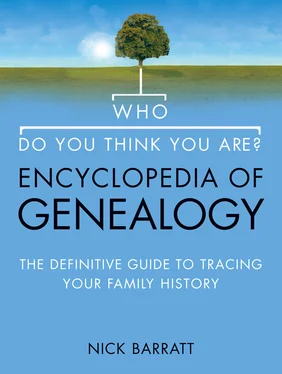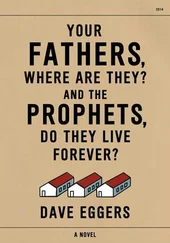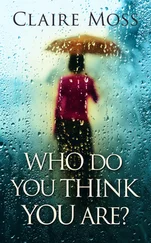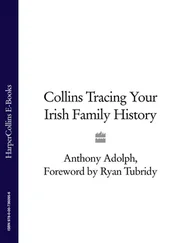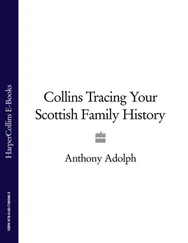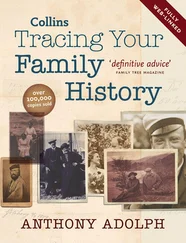The referencing system is the same as that used in 1861. The only difference is the first prefix is now RG 10, signifying it is the 1871 census.
Again, the referencing system is the same as used in the previous three censuses. The TNA prefix is now RG 11, as it is the 1881 census.
The 1881 census for England, Wales, Scotland, the Channel Islands and the Isle of Man was fully transcribed by the Church of Latter Day Saints in the 1980s. The Church has made access to this census in particular free of charge on its website, www.familysearch.org.
The referencing system is the same as the previous censuses, RG 12 being the appropriate prefix code for this series.
The request for information about the employment status of individuals, where appropriate, was first made in this census. Additionally a column has been added detailing the number of rooms that were occupied in the dwelling house if less than five.
This is the last publicly available census until the release of the majority of the information in the 1911 census in 2009. The appropriate prefix for this collection is RG 13.
Accessing Census Collections for England and Wales
As already mentioned, the original householders’ schedule forms were destroyed for 1841 to 1901. The original enumerator books, which form the census returns, are held at TNA for England, Wales, the Channel Islands and the Isle of Man. The census returns for Scotland and Ireland (discussed below) are held at their appropriate record offices.
The census returns for 1841 to 1901 have all been microfilmed and it is these microfilmed versions that are available to view. However, a far easier way to access and view census returns is via the Internet, as the records have been digitized by different commercial websites that offer access to them for a fee. Below are details of the many different ways you can access the censuses.
All census returns from 1841 to 1901 are available, free of charge, at TNA in its reading rooms at Kew, South West London, on microfilm or microfiche. Reference guides, leaflets and indexes are available to help you locate the relevant TNA reference. Online access to the returns for 1841–91 via TNA’s commercial partner Ancestry is also available in the reading rooms for free, though you have to pay for any copies you make. You can also search the 1901 census database for free, though access to the actual digital images still costs money. The 1881 census has been fully transcribed, and an index is available in the reading rooms. Parts of the 1851 census have been indexed by family history societies, and these indexes are also available.
Local Record Offices and Archives
As the censuses were microfilmed, many local libraries, record offices, family history societies and archives were able to purchase copies that cover the local vicinity. Most of these institutions will only have information for the relevant county or place, but they will also have useful local indexes that might not be available nationally, particularly if they were prepared by a family history society. These will include many local projects to catalogue and index the 1851 census, as well as the complete 1881 census index. Some indexes for the 1841 census are also available, and some companies have produced CD ROMs for local census returns for 1861 and 1871, and for 1891 as well. Additionally, staff will have specialized knowledge of the census for their area and can inform you of any missing areas. They will usually be available on microfiche or film and may suit people who are not IT literate.
‘Local record offices will have useful local indexes that might not be available nationally.’
There are many commercial genealogical websites on the market, most of which have indexes and digital copies of the census online, although they are seldom free of charge. Here is a list of the most complete collections:
• www.ancestry.co.ukThis is one of the largest genealogical websites, with numerous databases, including a comprehensive census collection for England, Wales, the Channel Islands and the Isle of Man from 1841 to 1901. It is a payable service, either by a monthly/annual subscription or a pay-per-view system. Each census has an index and hence it is possible to do simple name searches (including various other details if required) when conducting a search. It is possible to search the index for free, although viewing the entire entry can only be done at a cost. Additionally, the index for the 1881 census can be searched in its entirety without cost as it has been previously transcribed (see above). It is through Ancestry that TNA provides access to the census records onsite. Another useful aspect of the census collection of Ancestry is that it details missing or incomplete registration districts for the 1841, 1851 and 1861 censuses. Hence, if you think you know where your ancestor should have been living, you can run a check against the list if you are having difficulties finding the individuals.
• www.1901censusonline.comThis was the first website to offer a census online in collaboration with TNA. It was a joint venture to release the 1901 census for England and Wales in January 2002 (after the 100 years closure period). However, the website now offers searches for all other censuses apart from 1881. The index is free to search although payment is required to view the original record. You can search by name and the website also offers other useful search functions. For example you can search by address, vessel (Royal Naval ships amongst other things) or institution (such as a hospital or prison). To view the original images you will have to purchase pay-per-view vouchers from the website.
• www.findmypast.comFormerly concerned with providing access to birth, marriage and death indexes, Find My Past has a growing collection of censuses. At the time of going to print it was possible to search the 1841, 1861, 1871 and 1891 censuses for England and Wales free of charge, although viewing the transcriptions or the originals costs a number of units which have to be purchased in advance.
• www.origins.netThis is another large commercial genealogical website, with a number of databases, including census collections for England and Wales. Its census collection is not complete, however. At the time of print it covered 1841 and 1861 in their entirety, but its database for the 1871 census was incomplete, only covering certain counties (listed individually on the website). Again it is a payable service and it is only possible to do a very simple search without first subscribing.
• www.rootsweb.ancestry.comThis is the sister site to www. freebmd.org.uk that provides transcriptions of the national GRO birth, marriage and death indexes for free, and this site for census returns works on the same principle. It is run by a team of volunteers who are transcribing various parts of the census free in an attempt to make as much information available on the website without cost to the researcher. It is an ongoing project working on particular counties of England, Scotland and Wales for all censuses from 1841 to 1891. No census has been completely transcribed but the website does provide a graph showing which counties are covered for each census, along with the percentage of coverage for each county. The project is constantly recruiting volunteers to assist with the process.
Читать дальше
